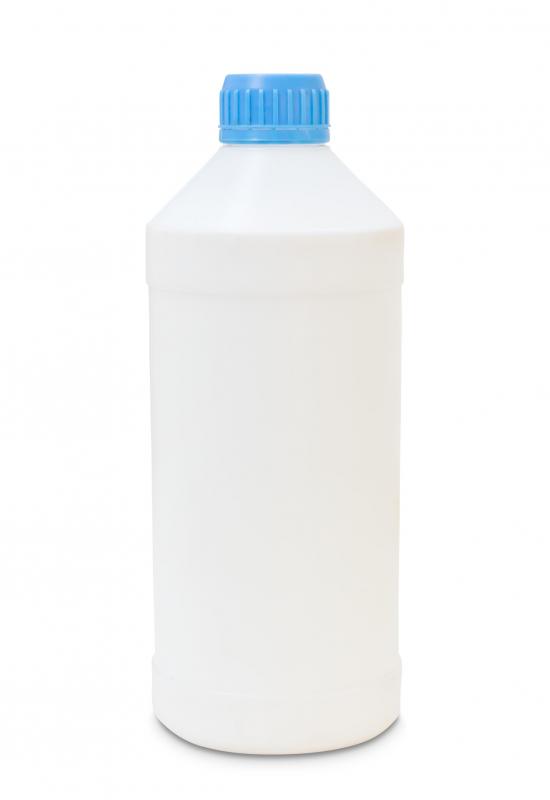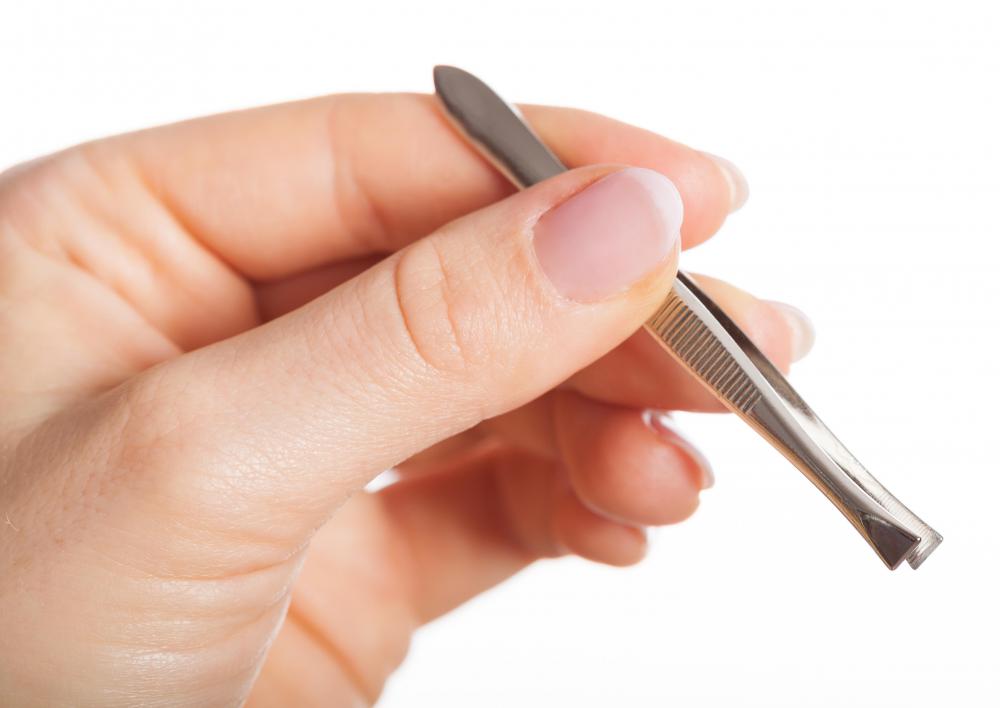At AllThingsNature, we're committed to delivering accurate, trustworthy information. Our expert-authored content is rigorously fact-checked and sourced from credible authorities. Discover how we uphold the highest standards in providing you with reliable knowledge.
How Do I Kill a Tick?
Ticks carry a variety of diseases that affect both animals and people. Handling or even touching a tick can spread disease. Depending on the circumstances, there are several ways to kill a tick without risking infection. Ticks can be killed while on the host or removed from the host and then killed. Homes and lawns can be treated with insecticides that will kill or repel ticks.
Live ticks that are not attached to a host can be killed easily. They should not be touched with bare hands but should be picked up using tweezers or a paper towel. The tick can then be dropped into a small jar containing isopropyl alcohol. After a few hours, the dead tick can be safely flushed down a toilet. Flushing a live tick down a toilet will not kill it.

Once attached to a host, ticks should be properly removed before they are killed. One of the safest ways to get rid of a feeding tick is to use a tweezers, grab near the head, and pull carefully and steadily until the tick is removed. Once the tick is out, it can be dropped into a jar containing isopropyl alcohol. The tick can then be saved for testing, if needed, in case the host develops any symptoms of a tick-borne disease.

It is not advisable to kill a tick by squashing it. Squashing a tick will kill it but will also expose the blood contained by the tick. The blood may contain diseases that can be spread by contact. Any surface that comes in contact with the blood may also be contaminated. If a tick is accidentally ruptured during removal from a host, the blood should be immediately wiped up and the area washed with soap and water.

There are many topical applications available to kill a tick on a pet. These highly effective treatments kill a tick present on an animal, causing the dead tick to fall off. Ticks that are found near treated animals are usually dead, but sometimes the ticks fall off while they are still alive. Any ticks found near treated animals should be treated as live ticks and placed in alcohol for several hours before disposal.

Many lawn and garden insecticides contain ingredients that are effective against ticks. These preparations are especially useful in areas with large tick populations. Killing ticks that are present in lawn areas will minimize the risk of live ticks being carried into the home.
Frequently Asked Questions
What is the safest way to kill a tick on my pet?

To safely kill a tick on your pet, use fine-tipped tweezers to grasp the tick as close to the skin's surface as possible. Pull upward with steady, even pressure. Do not twist or jerk the tick, as this can cause parts of the tick to break off and remain in the skin. After removal, clean the bite area and your hands with rubbing alcohol or soap and water. Dispose of the tick by submerging it in alcohol, placing it in a sealed bag/container, wrapping it tightly in tape, or flushing it down the toilet.
Can I use essential oils to kill ticks?
While some essential oils are touted as natural repellents, their effectiveness in killing ticks is not well-supported by scientific evidence. The Centers for Disease Control and Prevention (CDC) recommends using EPA-registered tick repellents or other proven methods for tick control and prevention. If you choose to use essential oils, do so with caution and consult a healthcare provider, especially when applying on children or pets.
What should I do with a tick after I've removed it from my skin?
After removing a tick from your skin, it's important to dispose of it properly to prevent it from biting again. You can kill the tick by placing it in a container with rubbing alcohol. Alternatively, you can wrap the tick tightly in tape or place it in a sealed bag before disposing of it in the trash. Do not crush the tick with your fingers to avoid potential exposure to diseases.
Are there any household products that can kill ticks effectively?
Household products like rubbing alcohol, bleach, or hydrogen peroxide can kill ticks. However, these should not be applied directly to your skin or your pet's skin. Instead, after safely removing the tick with tweezers, you can submerge it in a small container filled with one of these liquids. This will effectively kill the tick and allow for safe disposal.
How can I prevent ticks from latching onto me or my pets?
Preventing ticks from latching on involves several strategies. Use tick repellent containing 20-30% DEET on skin and clothing, and treat clothing and gear with products containing 0.5% permethrin. Keep to the center of trails when hiking, wear long sleeves and pants, and perform regular tick checks after outdoor activities. For pets, use veterinarian-recommended tick prevention products and keep your yard trimmed and free from leaf litter.
What are the risks of improper tick removal?
Improper tick removal can increase the risk of transmitting tick-borne diseases, such as Lyme disease. Squeezing the tick's body or leaving the mouthparts in the skin can lead to infection. Using methods like painting the tick with nail polish or using heat to make the tick detach can cause the tick to regurgitate its saliva and stomach contents, further increasing the risk of infection.
AS FEATURED ON:
AS FEATURED ON:















Discussion Comments
Interestingly, there are so many different suggestions out there about disposing of the tick after you remove it. Some people say to smash it which is clearly not a good method. Some just flush it down the toilet regardless of whether it is alive or not.
Apparently even burning it is not a good idea because it might cause the tick to explode and the blood might still manage to get on you or somewhere else.
I've even heard that we should wrap it in an alcohol dipped tissue and burn it, or put it in a plastic bag and freeze it in case we need to have it tested later on.
There are so many different opinions out there! But I really think that leaving it in alcohol and then flushing it is the best and safest way.
I remember several years ago, bird flu was on the rise and the authorities in my country started collecting free fed chickens to prevent any infections. Somehow that changed nature's balance and we started seeing ticks everywhere. Few months later, we heard about something called the Crimean Congo disease which is transferred through ticks. Everyone was so worried about the ticks and the media did a lot of news showing us how to properly remove and get rid of ticks.
We were told to first suffocate the tick by placing a cotton ball dipped in oil on top of it. The oil prevents the tick from breathing and it also prevents the tick from releasing poisonous substances into the bloodstream as a reaction to being removed. After doing this for about a minute or so, they said that it is safe to pull the tick out with tweezers. I think the best way to do this is to pull it straight out, not twisting or turning as that might leave the head of the tick inside.
The health authorities actually recommended us not to destroy the ticks during that time period. They asked people to put the tick in a jar or other closed container and take it to the hospital with them for testing. They wanted to know if the ticks carried any disease.
I guess if there is no such risk or message from the authorities, you can kill it. We had to remove and kill a tick on my dog once and after doing the steps I mentioned, we burned the tick by holding it to fire with the tweezers. That is a very hygienic way to get rid of it as well.
Post your comments